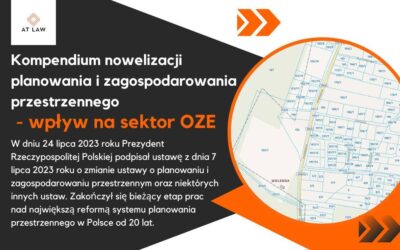
Many developers and investment funds are closely following the development of the government’s #MieszkaniePlus program. According to information on the website mieszkanieplus.gov.pl, 867 apartments have been built as part of the program (as of 08.08.2019)[1]. For example, Giżycko and Suwałki decided to build apartments in the PPP formula. However, this is only a modest beginning. The maximum limit of funds that can be allocated to the Subsidy Fund in 2019 may amount to PLN 400 million, then this amount will be increased by 400 million per year to reach 2 billion in 2023. The forecasts says that the level of PLN 2 billion will be maintained until 2028. We should remember that the above amounts are only an additional payment to the rent, which the main part will be paid by the users of the built apartments. The potential revenues of developers who build apartments in the PPP formula under the Mieszkanie Plus will therefore be a definite multiple of these amounts. The amount of the developer’s or investment fund’s profit will depend on the selection of one of the possible project structures allowed under the provisions of the Public-Private Partnership. Which financial streams can a private partner earn? How can he best arrange his rights and obligations in the contract with the municipality? Which risks should he consider? Below we present several possible variants.
A typical model of PPP application in the construction of housing facilities is the municipality’s real estate as own contribution. However, it is not excluded that developers who have their own real estate will be able to use PPP. In particular, larger investment funds may be tempted to propose comprehensive and quick solutions to municipalities that do not have adequate own land resources. The disadvantage of bringing a plot by the commune is, among others, the need to return the ownership of the plot together with the constructed buildings to the commune after the end of the PPP contract. In this case, the municipality will be able to continue renting communal apartments directly to its residents. It can be assumed that in a situation in which the developer contributes his own property to the joint venture, he will be able to secure a much stronger position even after the end of the PPP contract.
The sale of real estate to a private partner is not the only possible solution. The PPP contract may also provide for the land to be leased or used. Similar types of rights may be established for the benefit of SPV (special purpose vehicle) created specifically for the needs of a specific PPP project in which the municipality and the private partner will participate. Based on the above options, the developer should consider which financing and return on investment model best fits the characteristics of his organization.
The private partner’s remuneration is not specified in the PPP Act in the form of an unequivocal legal definition. The Act indicates only two forms of such remuneration, i.e. the right to receive benefits from the subject of PPP and payment of a sum of money. The remuneration of a private partner can therefore be both availability fee (which in terms of the definition of the PPP Act corresponds to the payment of a sum of money by a public partner to a private partner) or rents paid by tenants increased by subsidies from Bank Gospodarstwa Krajowego.
According to the commonly used definition of this concept, the availability fee consists of the payment by the public entity to the private partner of an amount equivalent to the private partner’s contribution to the implementation of a specific public-private joint venture. The application of remuneration in this form usually applies to projects in which it is not possible or very difficult to determine the remuneration of the private partner in the form of a fee from users of the subject of the partnership or when such fees are insufficient to cover expenses related to a given project, including project costs and profit private partner.[2]
It is worth noting that depending on the course of negotiations at the stage of choosing a private partner, the remuneration of the private partner may come either entirely from the availability fee or partly from the availability fee and income from fees from the users of the assets of the undertaking implemented in PPP.
In the context of the financial possibilities of the private partner and the type of contributed assets (e.g. real estate), it is worth noting that the private partner’s remuneration may also be the takeover of built or renovated apartments. Larger investment funds will probably want to use this option, for which the construction of flats under Mieszkanie Plus with the use of PPP may be an excellent opportunity for a stable return on investment during the duration of the PPP contract (profits from rents and BGK subsidies), and then creating a large housing stock for rent. In return, the fund will probably have to offer the municipality some business concessions under the PPP contract, such as reducing or omitting the availability fee.
In the option of making the property available by the commune, it may be tempting for the private partner to purchase the property without a tender and with the use of a discount, which, with the consent of the voivode or the council of the regional council, may be granted to a private partner or SPV established together with the commune. In this case, the sale of the property takes place together with the buy-back right, which can be exercised no later than six months after the end of the duration of the public-private partnership contract.[3] Then the private partner or SPV of the private and public partner is obliged to transfer to the public entity the ownership of the property with a simultaneous refund of the price determined in accordance with the discount, after taking into account its valorisation.[4]
One of the additional options for the implementation of a residential investment under PPP, which a private partner may consider when defining its business assumptions, is the renovation of existing buildings for housing needs. This may apply primarily to older, depreciated buildings in city centers. By the way, it will be possible to use the numerous subsidies available to increase the energy efficiency of such buildings.
As part of the private partner’s business calculation, the potential assumption of tenant solvency risk will play a very important role. As part of negotiations with the commune, a private partner may decide to accept such a risk, but in return demanding a correspondingly higher margin[5]. Such a model will also be better suited for larger investment funds planning to participate repeatedly in the implementation of the Mieszkanie Plus program under PPP.
Therefore, as you can see, a private partner – a developer, an investment fund or other type of investor – may consider many different options for implementing the project together with the public partner. Only a small part of them has been described above. For the needs of a good understanding of the various business models under PPP, used in particular in the implementation of the Flat Plus program, complementary knowledge of the rules and practice in their application will be important. For example, if a private partner assumes profits resulting from the right to receive benefits (rents) or profits from benefits and subsidies from BGK, then it must take into account that the selection of a private partner will apply the Act on concessions for works and services. However, if a private partner plans to collect remuneration primarily from a public entity (the so-called availability fee), then it will have to prepare for the application of the Public-Private Partnership Act and, to an extent not regulated in it, the Public Procurement Law.
The role of lawyers will be to show the entrepreneur planning a joint venture construction project how individual legal provisions can translate into further economic variants of project implementation. This will allow the developer or investment fund to choose in advance the most convenient option for its implementation and then to push through such assumptions during the course of one of the modes of choosing a private partner. The most popular of these is the competitive dialogue, during which lawyers should help a potential private partner to place as many of his business assumptions as possible in the content of the draft contract with the public partner and the Specification of the Essential Terms of the Contract. This will ensure the most effective use of the assets of the entity applying for the selection and implementation of the enterprise in the PPP formula.
Author: Paweł Zajkowski, Partner at Pydo i Wspólnicy sp.k.
[1] https://mieszkanieplus.gov.pl/
[2] “Accessibility fee – legal and financial interpretation of the concept together with an opinion on selected issues regarding the distribution of risks (…)” – Ministry of Regional Development;
[3] J. Kalecińska – Rossi, „Realizacja programu Mieszkanie plus w partnerstwie publiczno – prywatnym”, Biuletyn PPP 2/2019;
[4] Art. 68a of the Real Estate Management Act.
[5] See footnote 3.
